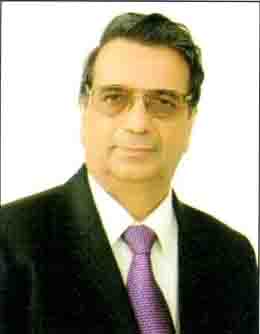Gahat khann te Dimmar regi: popularity of millet in Uttarakhand

Monday, 06 March 2023 | VP Dimri | in Guest Column
GUEST COLUMN
 VP Dimri
VP Dimri
About 820 million people in the world sleep daily without eating dinner. The government of India started a new millet policy to fight against hunger. For this, the United Nations on the recommendation of the Indian government has declared the International Year of Millet (IYoM-2023) for general awareness on the value of millet. India produces more than 170 lakh tonnes of millet every year which is 20 per cent of the global production. The main contributors of millet in India are Rajasthan, Andhra Pradesh, Telangana, Maharashtra, Gujarat, Uttarakhand and Haryana. Its production requires less water as compared to other crops like rice. Himalayan Jhangora (barnyard millet) is one of the oldest cultivated millet grown and harvested by Uttarakhandi farmers which is still very popular. Millets have superior nutritional values in comparison to highly consumed produce such as rice and wheat. Millets are rich in calcium, iron and fibers that help in fortifying essential nutrients for healthy growth in children. Also, the usage of millet in infant food and nutrition products is increasing.
Now, I shall write about how popular millet is in Uttarakhand. Here, it is known as koda or ragi. In November 2021, we went to a restaurant in Rishikesh to celebrate our 45th marriage anniversary and asked for dinner. As usual, the waiter narrated various foods including an Uttarakhandi dinner. There were varieties of Uttarakhandi food items including koda-roti (millet-chapati) and gahat-dal (lentil). We ordered millet-chapati and gahat-dal with other items and honestly speaking all of us including the grandchildren who are Mumbai-based, and took such food for the first time, enjoyed the combination of millet with gahat. I immediately remembered a popular song in Garhwali/Kumaoni that describes the richness of Uttarakhandi villages. In fact, most Uttarakhandi villages are recognised in this song for their cultures, customs, resources and also problems among other aspects. One of the lines of a big and beautiful song is ‘Gahat khann te Dimmar regi’ meaning that one can eat gahat dal in Dimmar village. Besides other known qualities of Dimmar such as mangos, raspberry and blackberry, it is also known for gahat lentil.
Himalayan Jhangora (barnyard millet) is one of the oldest cultivated millet grown and harvested by Uttarakhandi farmers which is still very popular. Millets have superior nutritional values in comparison to highly consumed produce such as rice and wheat. Millets are rich in calcium, iron and fibers that help in fortifying essential nutrients for healthy growth in children. Also, the usage of millet in infant food and nutrition products is increasing
Similarly, names of other villages are described in this song such as ‘kela (banana) khannte Samya regi’ and ‘basmati khannte Ratura regi’ meaning Samya and Ratura villages are famous for bananas and high-quality basmati (rice) respectively. The famous song also underlines the problems of the villages as a part of the song is ‘tur turya panite Khandura regi’ meaning that water in Khandura village is available drop by drop i.e. scarcity of water. Let me add here that the song is very old but now the water problem of Khandura village has since improved. The song can tell about the climatic condition of a village. One line reads like ‘Dhika dhamkaunte Nauti regi’ meaning when the ground is plowed one gets a dhika (ball) of mud and not smooth soil. Dhamkaun in Garhwali means crushing. Plowing is a general practice by farmers to cut the soil. It means the village Nauti has a lot of moisture in the soil or humidity in the atmosphere which makes the soil a ball while plowing.
Let us see how gahat dal is useful for health. As a child, I remember that gahat dal is given to improve digestion and for clearing coughs and colds. It is also recommended for weight loss and reducing cholesterol levels. Now, doctors treat it as an antioxidant that helps to throw waste from the body. People of Uttarakhand used to take this lentil for renal health which includes kidney-related issues. In fact, it is known for its curative properties of treating gallbladder stones and maintaining rental health. It is also rich in vitamins and proteins.
The millets- koda and jhangora with gahat dal is not only delicious food but good for health with high nutritional value. So, we must encourage the cultivation of more millet and gahat which are already being practiced in Uttarakhand.
(A Padma Shri recipient, the author is an eminent scientist who has worked in various institutions. Views expressed are personal)






